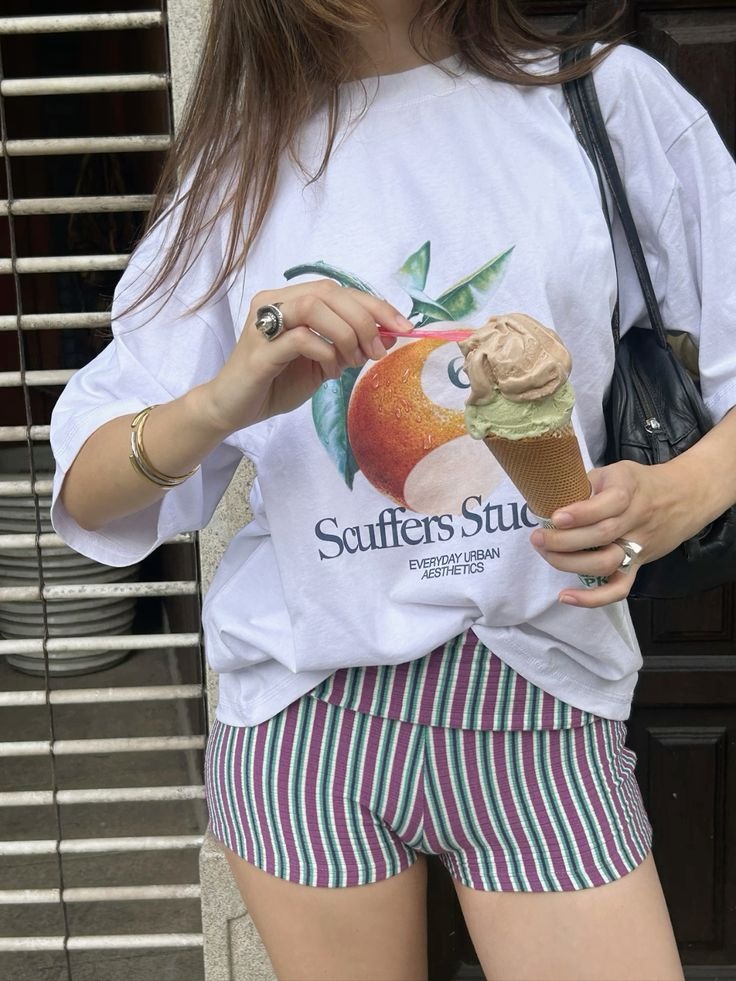Introduction
The tee shirt occupies a unique place in the world of apparel as a garment that transcends social boundaries, style trends, and functional demands. Its simplicity conceals a remarkable versatility that has allowed it to remain relevant for decades. What began as an undergarment has evolved into an iconic piece of clothing worn by diverse groups across the globe. This essay examines the origins, evolution, cultural resonance, manufacturing considerations, sustainability challenges, technological influences, and future prospects of the tee shirt. By exploring these dimensions, we gain insight into how a seemingly humble item has shaped and been shaped by society, reflecting attitudes toward comfort, identity, expression, and environmental responsibility.
Origins and Early History
The roots of the tee shirt trace back to the late nineteenth and early twentieth centuries when lightweight garments were sought for laborers and military personnel operating in warm climates. Early cotton knit garments provided ease of movement and breathability, and they were adopted beneath uniforms to absorb moisture. Over time, the garment migrated from underclothing to outerwear as workers and servicemen began to appreciate its comfort and convenience. The term tee shirt appeared as a reference to its T shaped body and sleeves. Popularity grew as photographs and anecdotes circulated about individuals wearing the garment in informal settings. By being functional and unadorned, the tee shirt embodied a break from restrictive attire that characterized earlier decades.
Evolution of Design and Materials
Initially produced in plain cotton fabric with a simple crew neckline, the tee shirt gradually incorporated a broader range of materials and silhouettes. Manufacturers experimented with different knit constructions to enhance durability and softness. Lightweight blends and performance fabrics emerged in response to athletic and outdoor demands. Necklines diversified beyond the classic round shape to include variations such as scoop styles or relaxed collars. Sleeve lengths ranged from standard short sleeves to extended cuts that offered slightly more coverage. Color palettes expanded beyond neutral tones to embrace vibrant hues and patterns. Print techniques advanced from basic stenciling to high resolution transfers that allowed detailed images and graphics. Despite these changes, the fundamental structure remained uncomplicated, reinforcing its identity as an accessible wardrobe staple.
Cultural Significance and Identity
Over the decades, the tee shirt evolved into a canvas for personal and collective expression. Graphic designs allowed individuals to display affiliations with musical acts, political movements, causes, or personal humor. Bands distributed tee shirts as a tangible token of connection with fans. Activists used printed slogans to promote awareness or protest. Entrepreneurs and brands leveraged the garment for marketing, distributing logo bearing shirts that fostered brand recognition. Subcultures adopted specific styles of tee shirts as signifiers of membership or shared values. In artistic circles, designers experimented with avant garde prints and collaborations that elevated the tee shirt to a medium of creative exploration. The widespread adoption of customized tee shirts underscores the human tendency to use clothing as a means of storytelling and identity formation.
Social Movements and Political Expression
The tee shirt has played a prominent role in social and political discourse. During periods of activism, printed statements on the garment served as portable billboards. Individuals wore messages advocating for civil rights, gender equality, environmental protection, and many other causes. In moments of solidarity, groups coordinated shirt designs to demonstrate unity. The low cost of production and distribution made the tee shirt an effective tool to disseminate ideas quickly. Photographs of protests often feature crowds adorned with matching or slogan bearing shirts, reinforcing the sense of collective purpose. Such visual impact fosters awareness beyond immediate participants, as images circulated in news outlets and personal media spread messages further. The practice continues in contemporary activism, illustrating how apparel can amplify voices and mobilize support.
Fashion and High End Collaborations
Though once regarded as purely casual wear, the tee shirt has penetrated high fashion through collaborations between designers and brands. Renowned fashion houses have presented luxury versions featuring premium fabrics, intricate prints, and unique cuts. Limited edition releases generate anticipation among enthusiasts and collectors. Streetwear labels elevate the tee shirt through artistic graphic designs and strategic partnerships with cultural icons. Runway shows sometimes juxtapose refined tailoring with relaxed tee shirts to illustrate contrasts or convey thematic narratives. This interplay between casual and formal realms highlights the garment’s adaptability. Even as price points rise in certain contexts, the tee shirt retains its intrinsic appeal rooted in comfort and simplicity. The phenomenon demonstrates that an item initially intended for utilitarian use can be reinterpreted as a statement piece within exclusive settings.
Manufacturing Practices and Ethical Considerations
The widespread production of tee shirts raises important considerations around labor practices, resource consumption, and environmental impact. Conventional cotton cultivation demands significant water and pesticide inputs in many regions. Factory operations may involve conditions that vary widely in terms of worker safety and compensation. In response, segments of the industry have pursued more ethical approaches. Organic cotton farms reduce chemical usage, while fair trade certifications aim to ensure humane labor conditions. Some brands adopt transparent supply chains to allow consumers to track origins of materials and production facilities. Innovations in recycling have enabled the creation of fabrics from reclaimed fibers. Despite progress, challenges remain in scaling sustainable methods while maintaining affordability for consumers. The tension between cost and ethics continues to spur dialogue among manufacturers, regulators, and purchasers who weigh personal values against economic realities.
Sustainability and Circularity
Concerns about waste and resource depletion have prompted efforts to extend the lifecycle of tee shirts. Consumers increasingly embrace practices such as repairing worn garments, repurposing fabric remnants, or exchanging shirts through resale and donation channels. Brands experiment with take back programs that collect used items for recycling into new fibers. Advances in textile recycling technologies aim to separate and process blended materials more effectively. Some initiatives explore biodegradable alternatives that break down with minimal environmental harm. Designers and manufacturers seek to design tee shirts with end of life in mind, selecting materials and dyes that minimize ecological footprint. Education campaigns inform buyers about caring for and disposing of garments responsibly. While complete circularity remains an aspirational goal, incremental improvements contribute to lessening the environmental toll of the garment industry and reinforce the role of the tee shirt as a bellwether for broader sustainable fashion movements.
Technological Innovations and Customization
Digital tools and manufacturing technologies enable novel approaches to tee shirt production and personalization. On demand printing platforms allow individuals to upload artwork or photographs and receive custom shirts without large inventory commitments. Direct to garment printing techniques produce detailed designs with minimal setup requirements. Virtual design interfaces let users preview shirt styles and layouts interactively. Automated cutting and sewing machinery enhances efficiency in larger scale operations. Smart textiles research investigates embedding sensors or conductive elements into fabrics to create interactive garments for health monitoring or communication purposes. While such advanced applications remain niche, they illustrate the potential of merging technology with a basic garment form factor. The capacity to offer rapid customization satisfies consumer desire for unique items, reinforcing the tee shirt as a medium through which personal voice and innovation converge.
Global Variations and Cultural Adaptations
Around the world, the tee shirt takes on regionally distinct forms and meanings. In some areas, local motifs and traditional patterns appear as prints that fuse heritage with modern style. Climate influences fabric choices and garment weights. In warmer zones, lightweight breathable materials prevail, whereas cooler climates may incorporate layering strategies, pairing tee shirts with jackets or outerwear. Popular slogans and graphics often reflect local languages, humor, or social issues. Markets vary in retail environments from street vendors offering affordable shirts to boutique shops curating designer collaborations. Manufacturing hubs in various countries produce tee shirts both for domestic consumption and export. Trade policies and economic conditions shape production flows. The global diffusion of the tee shirt underscores its universal appeal while highlighting how cultural context informs design preferences and usage patterns in diverse communities.
The Role in Everyday Life and Wardrobe Versatility
The appeal of the tee shirt lies partly in its capacity to serve multiple roles within a wardrobe. It functions as a base layer beneath shirts and jackets or as a standalone top during leisure activities. It offers a casual option for informal gatherings and can be dressed up moderately through pairing with tailored trousers or accessories. Layering the shirt beneath an open shirt or vest creates dimensional looks without sacrificing comfort. During physical exercise, performance oriented materials wick moisture and provide flexibility. The garment’s ease of care and durability contribute to its ubiquity in daily life. Many individuals accumulate collections reflecting interests and memories, whether from travel souvenirs, event memorabilia, or personal milestones. This multifaceted nature cements the tee shirt as a fundamental element in both personal style and practical dressing.
Economic Impact and Industry Dynamics
The market for tee shirts constitutes a significant segment of the global apparel industry. Demand spans from budget friendly mass market offerings to premium niche products. Retail channels include brick and mortar stores, online platforms, and direct to consumer brand websites. Marketing strategies leverage social media influencers and community engagement to drive interest in specific designs or limited editions. Seasonal trends and collaborations stimulate periodic spikes in sales. Competition among manufacturers encourages innovation in fabrics, printing processes, and sustainable practices. Small scale entrepreneurs utilize digital marketplaces to launch independent lines, capitalizing on low barriers to entry for design experimentation. Economic shifts such as changes in consumer spending patterns or disruptions in supply chains influence production volume and pricing. The resilience of the tee shirt market reflects its steady demand and capacity to adapt to evolving tastes, technologies, and economic conditions.
The Future of the Tee Shirt
Looking ahead, the tee shirt is likely to continue evolving in response to social, technological, and environmental forces. Advances in material science may yield fabrics with enhanced comfort, durability, and eco credentials. Greater adoption of circular economy principles could reduce waste and foster closed loop systems for garment lifecycles. Digital design tools and augmented reality may offer immersive customization experiences, empowering consumers to co create designs while minimizing unsold inventory. Cultural trends will shape graphic content and styling choices, reflecting emerging values and collective narratives. The balance between affordability and ethical production will remain a central tension, prompting continued innovation in manufacturing efficiency and transparent supply chains. The fundamental simplicity and adaptability of the tee shirt ensure its survival as a cornerstone of casual attire, even as its forms and implications transform over time.
Conclusion
The journey of the tee shirt from pragmatic undergarment to global icon underscores the interplay between functionality, identity, creativity, and responsibility. Its unassuming structure belies a canvas for expression that has bridged social divides and provided a vehicle for individual and collective statements. Manufacturing practices and environmental concerns challenge stakeholders to rethink how to produce and consume tee shirts more responsibly. Technological advancements open new possibilities for personalization and performance. As cultural contexts shift, the tee shirt adapts, reflecting the values and aspirations of wearers. By understanding its history, significance, and future trajectory, we appreciate how a simple garment can illuminate broader themes in fashion, industry, and society. The tee shirt remains more than an item of clothing; it is a symbol of comfort, freedom, and connection that endures across generations.



